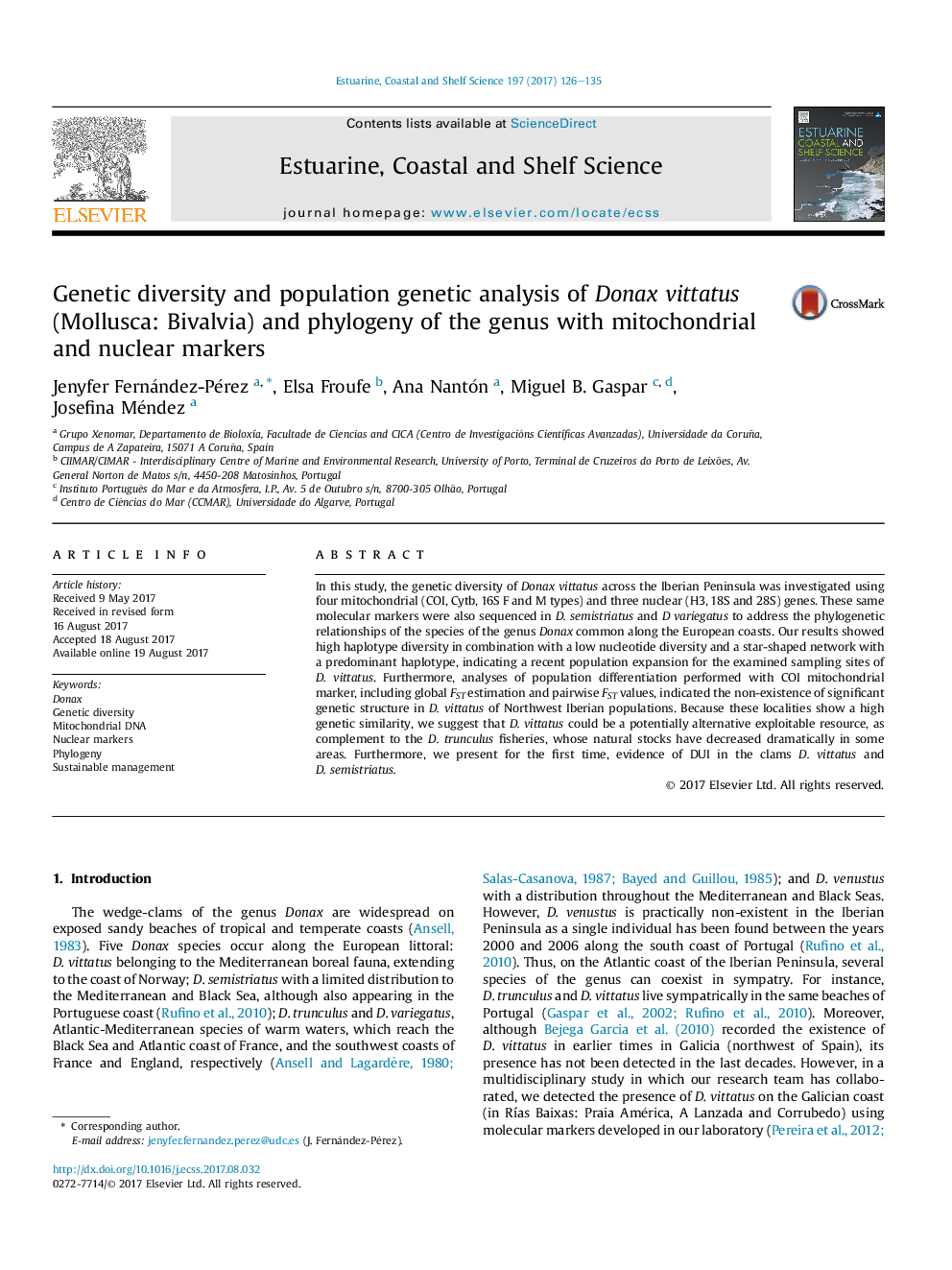| Article ID | Journal | Published Year | Pages | File Type |
|---|---|---|---|---|
| 5765064 | Estuarine, Coastal and Shelf Science | 2017 | 10 Pages |
Abstract
In this study, the genetic diversity of Donax vittatus across the Iberian Peninsula was investigated using four mitochondrial (COI, Cytb, 16S F and M types) and three nuclear (H3, 18S and 28S) genes. These same molecular markers were also sequenced in D. semistriatus and D variegatus to address the phylogenetic relationships of the species of the genus Donax common along the European coasts. Our results showed high haplotype diversity in combination with a low nucleotide diversity and a star-shaped network with a predominant haplotype, indicating a recent population expansion for the examined sampling sites of D. vittatus. Furthermore, analyses of population differentiation performed with COI mitochondrial marker, including global FST estimation and pairwise FST values, indicated the non-existence of significant genetic structure in D. vittatus of Northwest Iberian populations. Because these localities show a high genetic similarity, we suggest that D. vittatus could be a potentially alternative exploitable resource, as complement to the D. trunculus fisheries, whose natural stocks have decreased dramatically in some areas. Furthermore, we present for the first time, evidence of DUI in the clams D. vittatus and D. semistriatus.
Related Topics
Physical Sciences and Engineering
Earth and Planetary Sciences
Geology
Authors
Jenyfer Fernández-Pérez, Elsa Froufe, Ana Nantón, Miguel B. Gaspar, Josefina Méndez,
